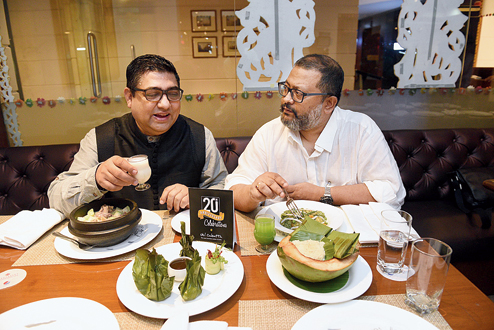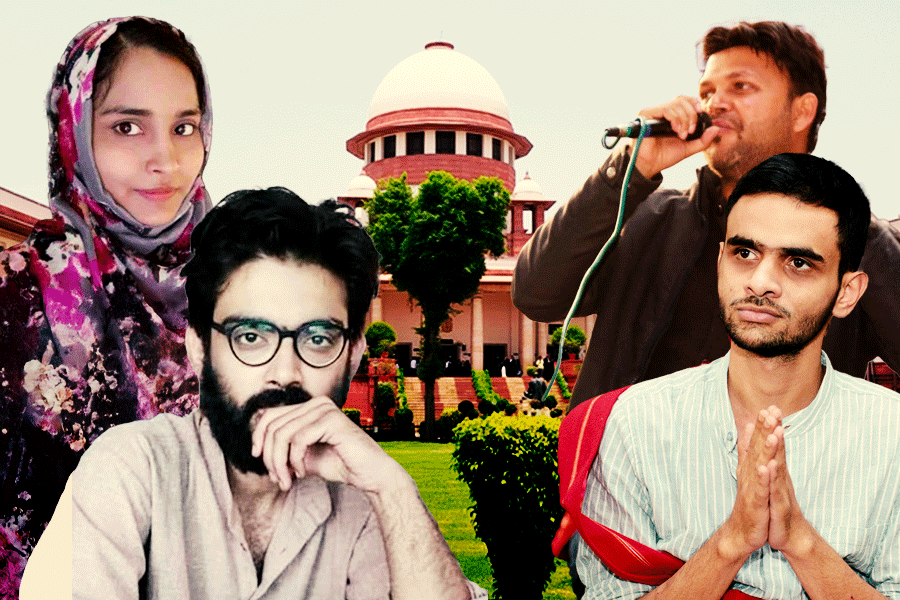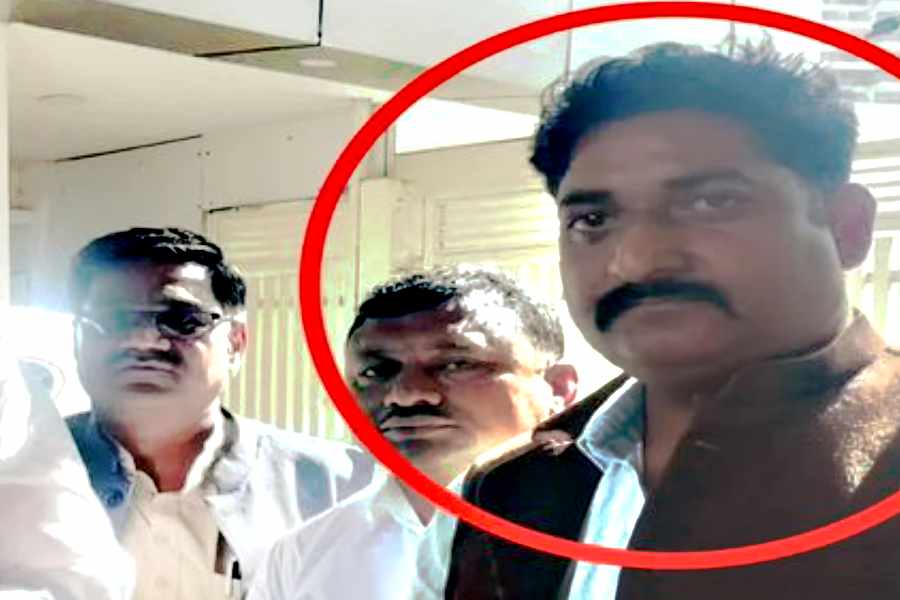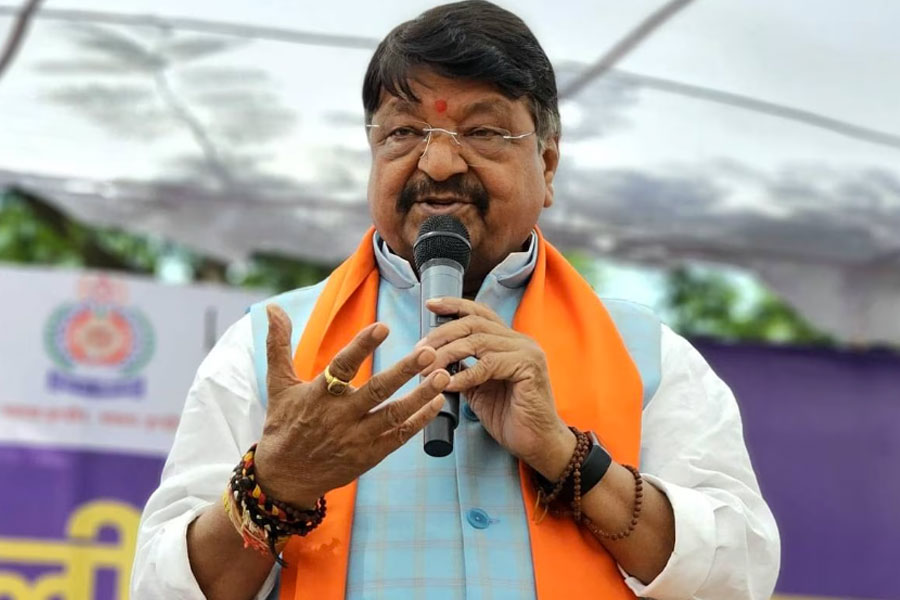The scent of a Gondhoraj Lime
Takes me back to my roots each time
The crunch of a Phuchka, the first bite
Sets the pace for the night...
Oh! Calcutta, Oh! Calcutta, Mmm Calcutta, Oh! Oh! Oh! Calcutta…
…goes the opening lines of a song composed by blogger Sawan Dutta for her video blog, The Metronome. The song that pays ode to Calcutta’s gourmet culture in general, and Oh! Calcutta in particular, comes at a time when the restaurant chain is celebrating the completion of its 20 years. Starting with a small outlet called Only Fish in Mumbai’s Mahim, which later changed its name to Oh! Calcutta, the brand has come a long way with 11 restaurants spread across the country. On Wednesday afternoon, Speciality Restaurants Ltd founder and MD Anjan Chatterjee took t2 through the two-decade-long journey of Oh! Calcutta.

I still remember, around 1997, we opened Opus, our production company, we got work that took Indrani and me to Bombay. More than work we went to Mainland China, Mostly Kebabs and Only Fish in Tardeo… and we just ate, hardly any business happened! I have Bengali food only at home and at Oh! Calcutta. All my friends who come from abroad come to Oh! Calcutta and try the Gondhoraj Bhetki, Kosha Mangsho and Luchi. There’s a drink called Kalboisakhi… a mix of aam panna and vodka, jeta khele jhor uthe jay! So it’s all about Bengali sentiments and emotions. The right blending without losing the Bengali emotion, but made for global Bengalis. I love the Fish Fry with kasundi, Chingri Cutlet... the Kakra Chingri Bhapa is a must.
— Aniruddha Roy Chowdhury
The beginning
This is a story of passion, very clearly. The very first restaurant that started in this corporation is something called Only Fish. The objective was to put Bengali food on the national map. My father was a scientist, he would get a lot of foreigners to our house and my mother would cook classic Bengali food for them like Muri Ghonto and Rui Machcher Kalia…. So from childhood I thought there’s a huge opportunity in Bengali food. In those days only Suruchi (on Elliot Road) was there in Bengali food, there was nothing else. My thing was that there was no place to feel proud of in the Bengali food space. So if you see, the advent of the Bengali restaurant revolution was started by Oh! Calcutta. Today I am extremely proud of the fact that so many Bengali food places have opened and they continue to make sense. That’s the reason we did the recipe book, to popularise the cuisine.
Bengalis will have Bengali food, that is a given, but taking Bengali food on the national map and making a Sardarji eat an ilish was the biggest challenge. In their mind, they didn’t have a positioning of Bengali food. We opened with Only Fish, so vegetarians would not come, so in one-and-a-half years we changed the name. I wanted to make a signature restaurant of Calcutta.
Reinventing Bengali cuisine
Calcutta has a 300-year-old cuisine which is a melting pot of various eclectic kinds of food representations. So, I named it Oh! Calcutta, after the Broadway play by the same name. We put together a menu at that time which had the classical Bengali cuisine. And then we started reinventing Bengali food, like the Gondhoraj Bhetki... our take on malaikari with real malai, Kakra Chingri Bhapa….
We included a full bhapa section with all steamed items because Bengali food involves quite a lot of fried food, but we realised people don’t want to have fried food so much. Minu (wife) is originally from East Bengal and my family is from West Bengal, and if you see the cuisine at Oh! Calcutta, it is a combination of the best of both cuisines. Oh! Calcutta was started by both Minu and me and she used to actually cook. Sorshe Bata Ilish is something no non-Bengali could handle because of the bones, so we made it boneless. We have an extensive vegetarian menu too, because we have a sizeable Marwari and Gujarati crowd. I didn’t want to make it predictable by serving food on kolapata etc, I wanted a modern, eclectic Bengali restaurant. Now a Bengali is proud to show off the food of Oh! Calcutta.

Sometime after Machher Jhol happened at The Metronome, Anjan Chatterjee called me up expressing his appreciation and asking if we could create something together. I’ve been a huge fan of Oh! Calcutta, and Anjan turned out to be a treasure trove of knowledge on Bangla cuisine. We decided to create a song about Calcutta (picture above), this wondrous city whose story lingers on in the aroma of its food. The shoot happened over three long days filled with nostalgia and new discoveries in the city that I’ve known only through my visits during childhood summer holidays.
— Sawan Dutta
ON THE SPECIAL MENU




Innovation is key
Innovations have been a very, very big thing. Our new menu has a dish called Prawn Purdanashin, which used to be served in Bengal Club, it is inside a coconut but it’s not a daab chingri. It is an ingredient-based cuisine… we have picked up Bengal ingredients like kasundi, which was only used as a table sauce, but we put it in the cuisine. So the effort has always been to make things in an innovative and eclectic form. Mocha Chingri Sheekh Kebab, nobody has thought about before. Then things like Aam Kasundi, Hing Diye Alur Dum, Bori Alur Chop, Chicken with Butter and Kasundi, Doi Shosha Dip… these are things that the non-Bengalis love.
Mind you, people who cook at Oh! Calcutta can’t be picked from five-stars. They continue to get trained at home, by Minu. Every chef who works here, Minu has taught them a thing or two here and there to ensure that it’s a home-grown cuisine. Why do people keep coming back to Oh! Calcutta? Because the ingredients are original but we continue to give them a twist.
They love us
People like Harsh Goenka or Shoojit Sircar, they are vegetarians but they love our food. Then Raju Hirani. Recently he was shooting the Sanjay Dutt biopic with Ranbir Kapoor and he told me Ranbir is a big fan of our Kosha Mangsho and Luchi.... Sanjeev Kapoor, he’s such a renowned chef himself but he is drunk on Oh! Calcutta. There are others who just love us, like Ram Ray, Atul Kasbekar… there are many, many names.
Text: Smita Roy Chowdhury











